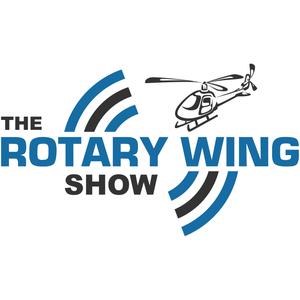
Rotary Wing Show - Interviews from the Helicopter Industry
Mick Cullen
For Helicopter Aircrew by Helicopter Aircrew
- 1 hour 32 minutesRWS 112 – What Do Army Loadmasters Do and an Amazing Story of Flood Rescue in the Town of Eugowra Nov 2022 with Kylle Fenton
Kylle Fenton is an Air Crew Officer (ACO) involved in air rescue and ambulance operations supporting NSW, Australia communities. He is more accustomed to being the one to bring the resources, rescue and safety to others in “the worst day of their life”. In this episode Kylle tells a gripping story of when he and his family needed that rescue support returned during the flooding of the Township of Eugowra in Nov 2022.
This episode is being pushed out the door half cooked so that you can hear it sooner. Please forgive any short comings in the polish.
Before Kylle was part of the HEMS world he had years of experience as a Blackhawk loadmaster in the Australian Army with time in special operations and as a loadmaster instructor. We discuss this career path and the many, many tasks that a loadmaster can find themselves doing.
Important – please look at the link below to the GoFundMe page for the Fenton family discussed in the podcast episode.
The township of Eugowra NSW has suffered a very major and overwhelming flood catastrophe earlier this week. pic.twitter.com/cprEaWDccZ
— Toll Ambulance Rescue (@tollambulance) November 16, 2022Podcast: Subscribe in iTunes | Play in new window | Download
Links from this week’s episode:
Support the podcast on Patreon>>> GoFundMe campaign for Fenton Family and Eugowra Residents <<<
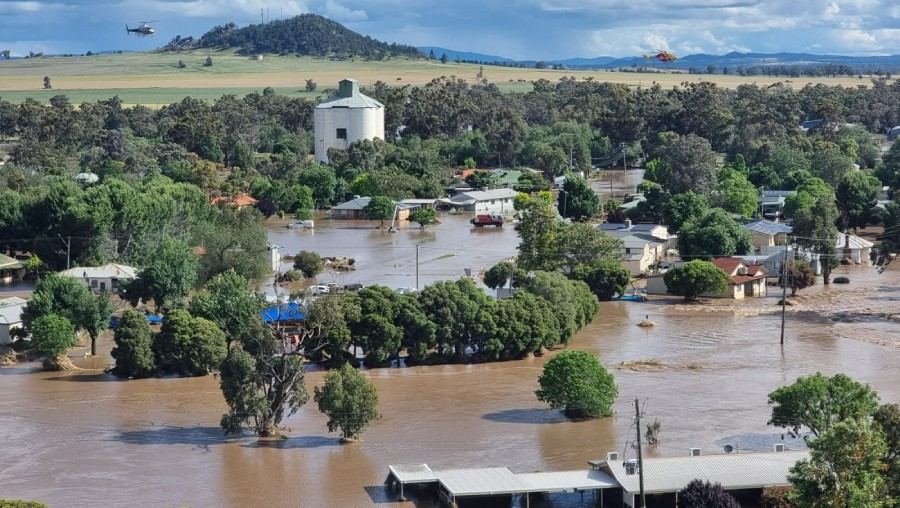
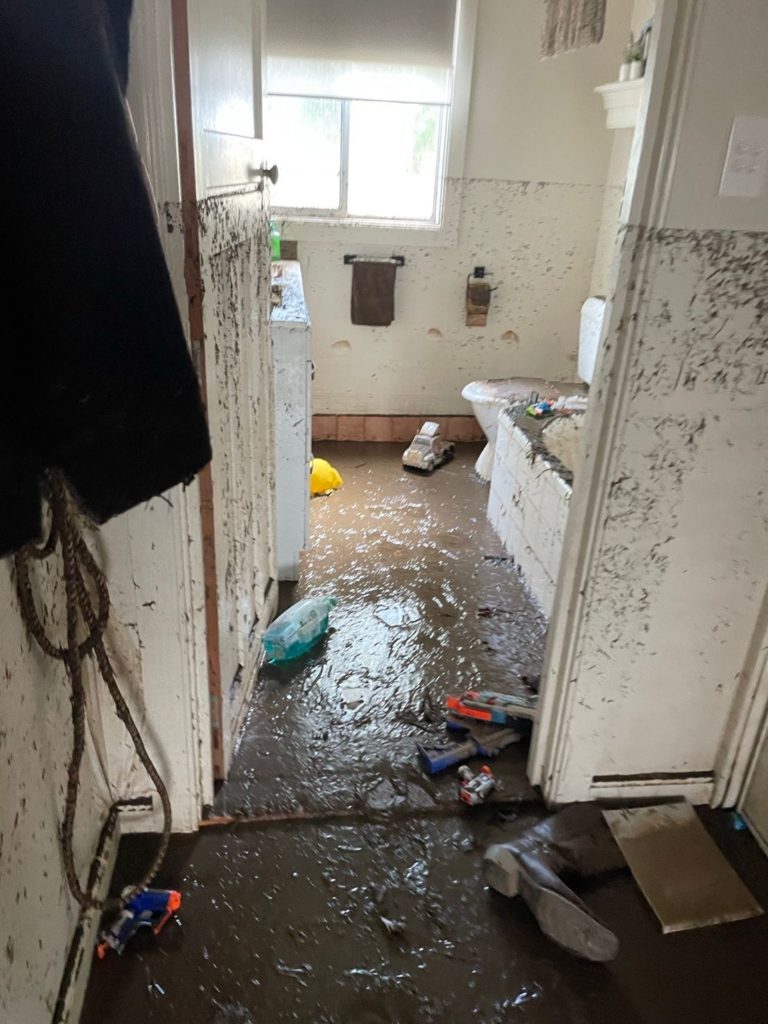
Brisbane Helicopter Drinks 10 Dec, Bracken Ridge Hotel: RSVP https://www.eventbrite.com.au/e/aussie-private-helicopter-pilots-group-brisbane-christmas-drinks-tickets-467070359017
What was your biggest takeaway from this episode? Help yourself remember and share it with others by making a comment about it here below.
The post RWS 112 – What Do Army Loadmasters Do and an Amazing Story of Flood Rescue in the Town of Eugowra Nov 2022 with Kylle Fenton appeared first on The Rotary Wing Show Podcast.
25 November 2022, 10:20 pm - 1 hour 10 minutesRWS 111 – Rescue Helicopter Crew Duties to 4300km R22 Ferry Through Remote Australia w/ James Koens
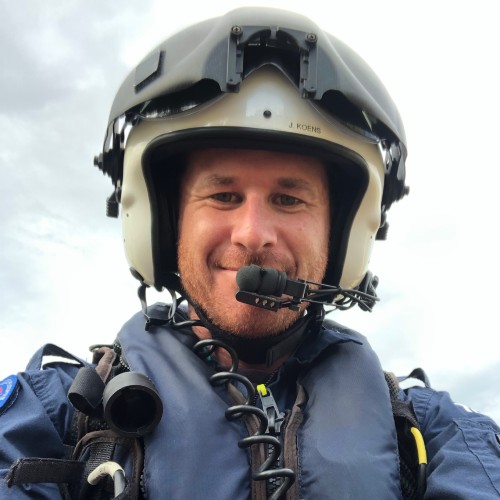
James Koens is a Check and Training Aircrew Officer on very expensive rescue/aeromedical helicopters. He also finds time to be a helicopter charter pilot, Army Reserve aircrewman, volunteer rural firefighter and a podcast host.
This episode is being pushed out the door half cooked so that you can hear it sooner. Please forgive any short comings in the polish.
In this episode James talks about some of the challenges of operating complex missions in the world of helicopter rescue and ambulance services. We then change track and discuss what James has learnt from ferrying small helicopters across remote parts of Australia.
Important – please look at the link below to the GoFundMe page for the Fenton family discussed in the podcast episode.
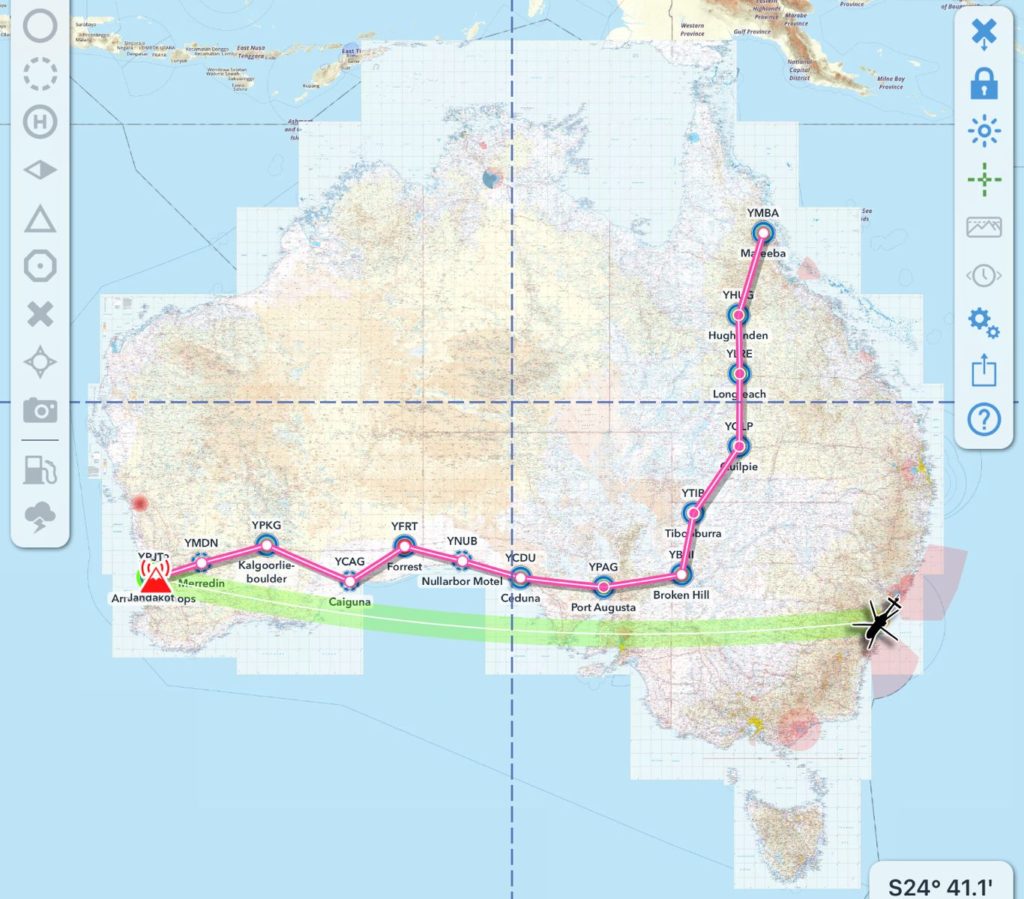 4300Kms, 30hrs, 16 fuel stops, a Robinson R22, and a whole lot of nothingness – From James’ LinkedIn post comment
4300Kms, 30hrs, 16 fuel stops, a Robinson R22, and a whole lot of nothingness – From James’ LinkedIn post comment
Podcast: Subscribe in iTunes | Play in new window | Download
Links from this week’s episode:
Support the podcast on Patreon>>> GoFundMe campaign for Fenton Family and Eugowra Residents <<<


Brisbane Helicopter Drinks 10 Dec, Bracken Ridge Hotel: RSVP https://www.eventbrite.com.au/e/aussie-private-helicopter-pilots-group-brisbane-christmas-drinks-tickets-467070359017
What was your biggest takeaway from this episode? Help yourself remember and share it with others by making a comment about it here below.
The post RWS 111 – Rescue Helicopter Crew Duties to 4300km R22 Ferry Through Remote Australia w/ James Koens appeared first on The Rotary Wing Show Podcast.
21 November 2022, 7:44 pm - 55 minutes 2 secondsRWS 110 – Better Weather Situational Awareness with Matt Johnson
 Matt Johnson heads up a weather training program for Metro Aviation. He is a Gold Seal FAA Flight Instructor and FAA Designated Pilot Examiner.
Matt Johnson heads up a weather training program for Metro Aviation. He is a Gold Seal FAA Flight Instructor and FAA Designated Pilot Examiner.
Have you applied the idea of situational awareness to weather before? Knowing what the weather was doing, what the weather is now and what it will be in the future. With access to the right weather products and knowing more about how they are developed you can level up your pre-flight weather assessment.
Weather is a contributing factor to a significant number of helicopter accidents. It is easy to see why looking at the photo below – even without considering flying into cloud, just the reduced visibility and the reducing ceiling that poor weather brings with it can up the work rate and concentration that it takes to get the task done.
For many aircrew we stop learning weather theory after qualification and only brush up on it before check rides. And we can get rusty at it. Same goes for making the most of the different weather forecast products that are available for reference before going flying.
In this podcast Matt Johnson walks us through some of the weather briefing considerations and useful briefing products that are covered in the weather training program that is run in-house for Metro Aviation’s several hundred staff pilots. Matt’s own experience covers flying for law enforcement and 12 years in the helicopter aeromedical sector.
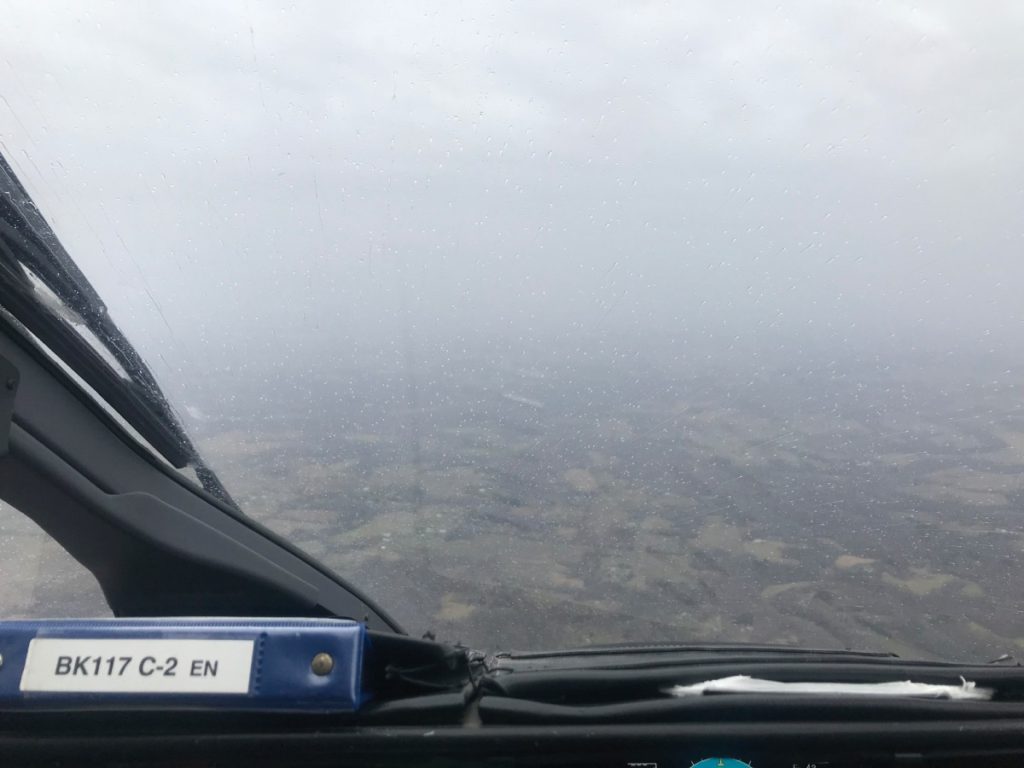 Yuck! You can already feel the workload increase, taking away free mental cycles from other decision making tasks.
Yuck! You can already feel the workload increase, taking away free mental cycles from other decision making tasks.
One of the things we talk about is the limitations of weather radars especially for lower level flights like many helicopter operations. Due to the curvature of the earth as you move away from the radar ground site the radar picture can fail to show rain areas up to several thousand feet above ground.
Below – This may only be a US aviation product but it is called the HEMS Tool and is avaliable directly off the National Weather Service’s Aviation landing page. It displays a range of information from low level weather forecasts.
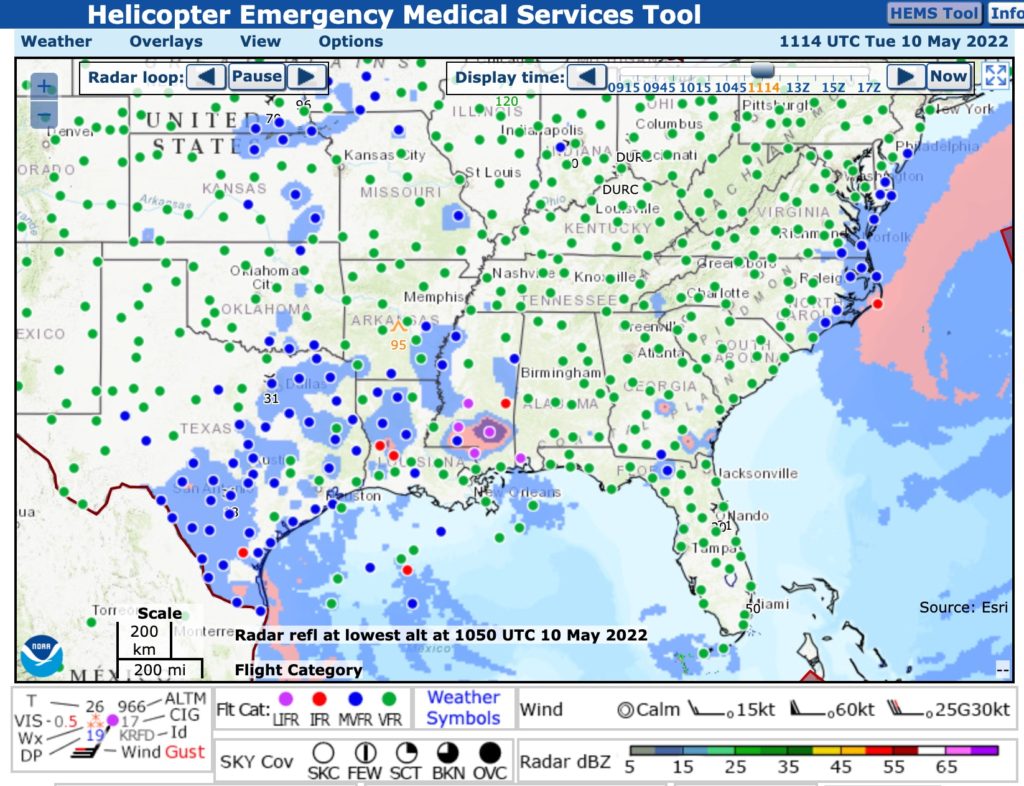
Perhaps Matt’s first stop when looking at the weather before coming on shift is the Aviation Forecast Discussion product. This is an amplifying comments area where the forecaster can give additional context and editorial to the normal ‘coded’ style products such as TAFs or area forecasts. It can indicate the possibility of developing weather that wasn’t modelled strongly enough to make it into other forecasts and the forecaster’s thoughts about the upcoming period.
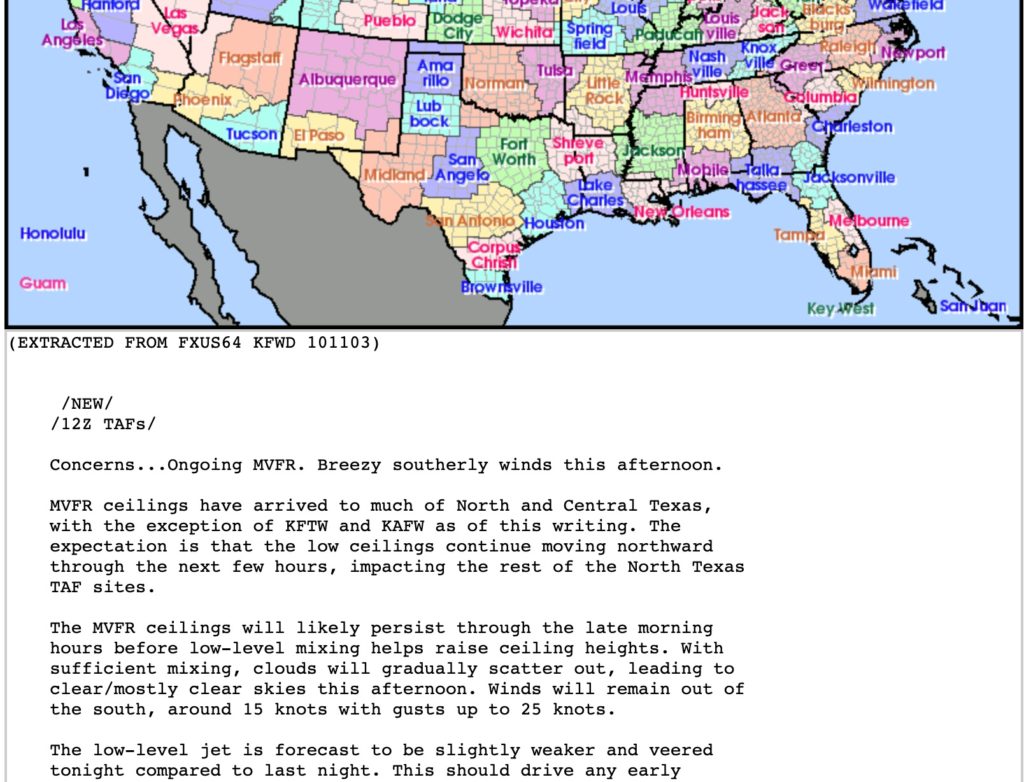
Podcast: Subscribe in iTunes | Play in new window | Download
Links from this week’s episode:
Support the podcast on PatreonAssessing General Aviation Pilots’ Weather Knowledge and Self-Efficacy – Embry-Riddle Aeronautical University paper, 2017
Short-Comings of Weather Radars – National Weather Service
How does a Weather Radar Work? and Radar FAQs – Bureau of Meteorology
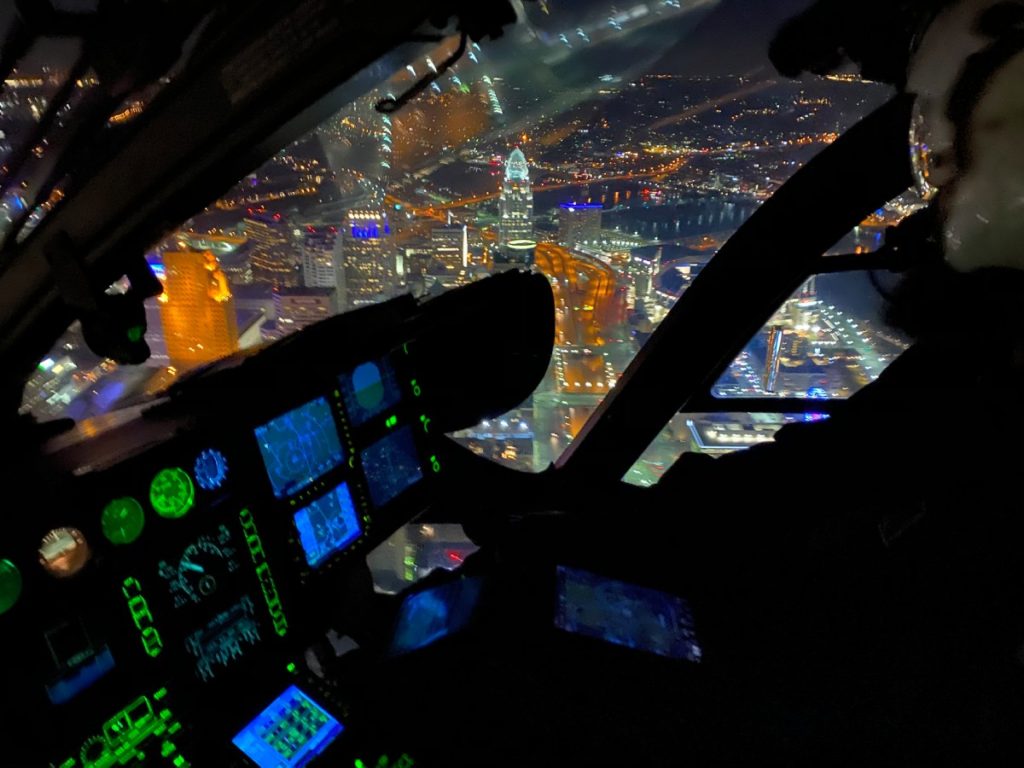 Matt Johnson has flown law enforcement and helicopter aero-medical sector roles. Along with his flight instructor and FAA Designated Pilot Examiner duties, Matt is active in promoting better weather knowledge and training amongst helicopter pilots.
Matt Johnson has flown law enforcement and helicopter aero-medical sector roles. Along with his flight instructor and FAA Designated Pilot Examiner duties, Matt is active in promoting better weather knowledge and training amongst helicopter pilots.
What was your biggest takeaway from this episode? Help yourself remember and share it with others by making a comment about it here below.
The post RWS 110 – Better Weather Situational Awareness with Matt Johnson appeared first on The Rotary Wing Show Podcast.
10 May 2022, 11:13 am - 59 minutes 28 secondsRWS 109 – Going Beyond the Social Media Clip – Pasadena PD Accident (2012) with Dan Parsons
 Dan Parsons is an airport safety professional where he tackles airport safety and regulatory issues all day long.
Dan Parsons is an airport safety professional where he tackles airport safety and regulatory issues all day long.
You have probably seen the video clip on social media multiple times – a OH-58 comes into land and as it touches down the blades contact another helicopter ground running beside it. Both aircraft are destroyed in spectacular manner but luckily there is no loss of life. In this episode we give a lot more context than you get from the seconds long clip.
There are a handful of helicopter videos that get recycled frequently on social media groups – yes we have all seen the BK117 toe into the steep snow slope to affect a rescue, there is no need to post it as if it is brand new

One of these video clips is of an accident that occured in 2012 between two Pasadena Police Department OH-58 (Bell 206 similar, in the episode I mistakenly refer to Bell 407) machines. The video clip is only a few seconds long and is a good example of just how quickly things can go wrong in a helicopter. Inevitably after the video is posted on social media the comments start to pile on fast and there are strong opinions thrown around.
Dan Parsons is an airport safety geek and works in the field. I saw his LinkedIn comment some time ago and his write up of the circumstances surrounding the accident and the steps taken afterwards to prevent a recurrence. In this episode Dan and I talk about some of the investigation findings and, very carefully, speculate on some of the factors. The goal here is to learn from others and to try and protect ourselves from getting into the same situation.
Source: aviation-safety.net – Aftermath of the collision and a good angle to see the positioning of the marked landing spots.
The photo above shows part of the aftermath of the accident and ground markings at the heliport at the time. Compare this to Google Earth imagery now to see the massive reworking of pad locations and marking that happened afterwards as a risk treatment.
Next time you see this clip on social media you will know a lot more of the context and if you can’t help but comment on it, then we can improve the quality of conversation and lessons learnt for all of us.
Podcast: Subscribe in iTunes | Play in new window | Download
Links from this week’s episode:
Support the podcast on PatreonAccident Review: Pasadena PD Helicopter Collision – Dan’s article
Collection of accident information and photos of the incident
Case Study Risk Identification – this is safety course assignment based on the Pasadena PD 2012 accident with a lot of background information and investigation findings.
Longer before and after video of the accident. I hadn’t seen this particular video at the time of recording the interview but again it gives additional context over the short clip normally shown on social media.What was your biggest takeaway from this episode? Help yourself remember and share it with others by making a comment about it here below.
The post RWS 109 – Going Beyond the Social Media Clip – Pasadena PD Accident (2012) with Dan Parsons appeared first on The Rotary Wing Show Podcast.
29 April 2022, 3:05 am - 1 hour 7 minutesRWS 108 – Sharing an Apache Cockpit with a Burning Flare with Clive Richardson
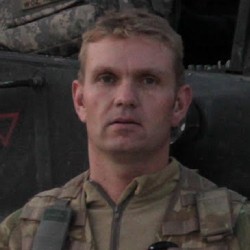 Now a helicopter instructor in the UAE, Clive Richardson flew Apaches in the British Army and was part of the Blue Eagles helicopter display team.
Now a helicopter instructor in the UAE, Clive Richardson flew Apaches in the British Army and was part of the Blue Eagles helicopter display team.
As aircrew we spend a huge amount of time training for different circumstances and emergencies. Dealing with a burning flare in your cockpit fired from a wingman’s aircraft is not one of these circumstances!!
Add in the complications of being a few thousand feet in the air, over hostile controlled land and in a sealed Apache cockpit with your own personal weapon ammunition at risk of cooking off and you have a fun time ahead of you.
This is the situation Clive Richardson found himself in. Perhaps strangely enough his prior HUET experiences in the pool dunker kicked in to some degree.
Meanwhile in the front seat of the Apache, unable to see what is going on in the back other than a lot of smoke in the mirror and no comms (Clive’s intercom lead had become unplugged) and just after a large ‘bang’ , Clive’s co-pilot was trying to work out what the hell was happening.
10 Years ago today, marks the anniversary when I learned why you should always fly with your visor down.
Having a 2000 degree magnesium spectral flare smash into your face at the speed of a low velocity round, while over Helmand Province with no landing options will usually focus you mind.
After hitting my visor with such force I smashed my head off the opposite window the flare melted my chest rig before causing a fire in my navigation bag containing 150 rounds of ammunition. The fire persisted and filled the cockpit with black acrid smoke. I held my breath and was able to shake the still burning flare out of my nav bag to the floor. After burning my trousers and melting my boots it eventually burnt out. So glad the Apache was not equipped with a cockpit fire extinguisher…..but at least I had a visor! If you fly with a visor, use it! – Original LinkedIn Post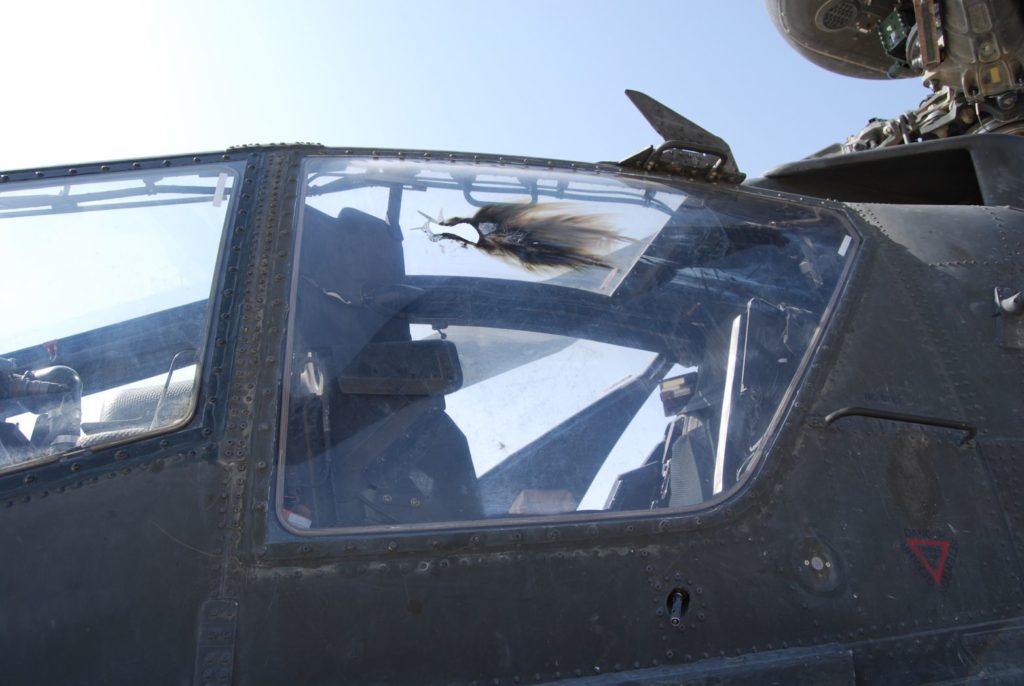 Entry point of the flare through the lefthand windscreen with burn marks.
Entry point of the flare through the lefthand windscreen with burn marks.
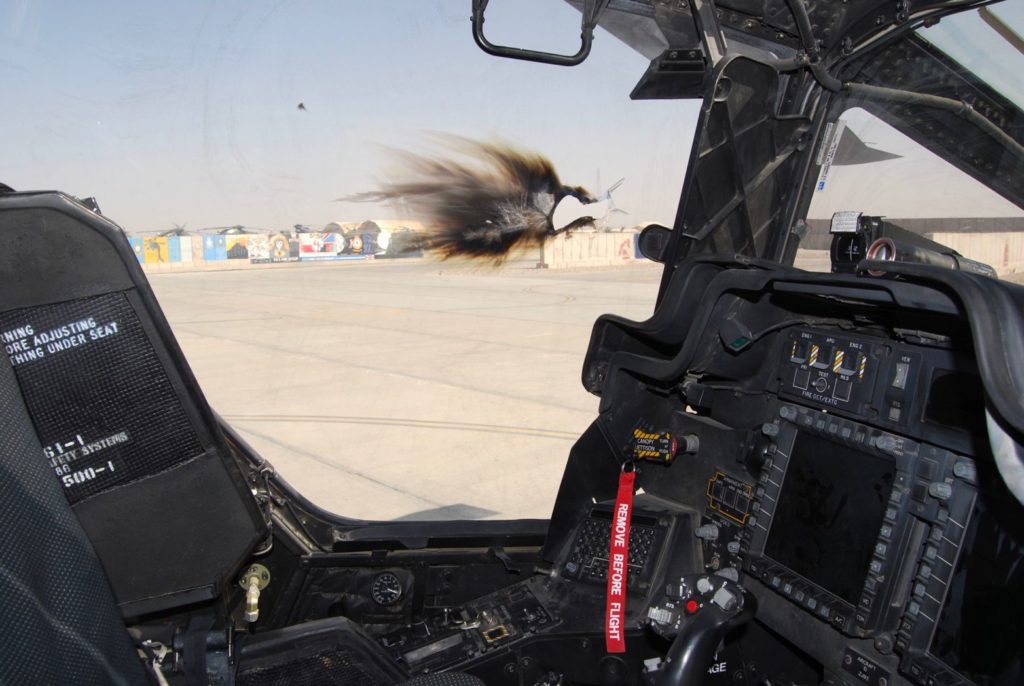 View from the inside of the Apache cockpit.
View from the inside of the Apache cockpit.
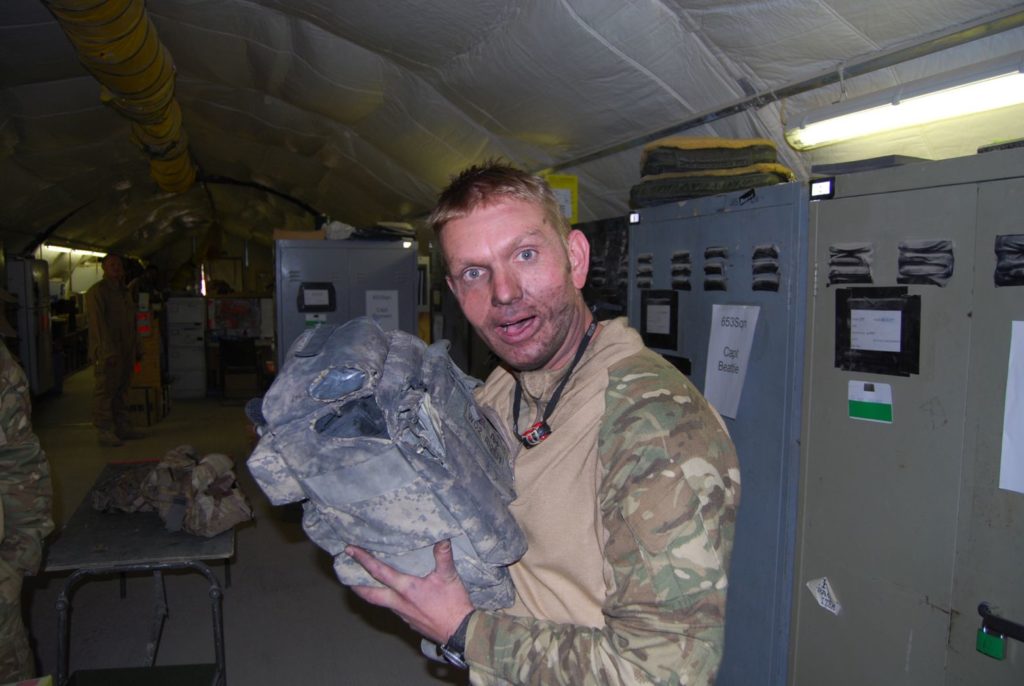 “You will note in the photo how only the lower part of my face was affected by the fire due to the visor and the hole in the bottom of my nav bag where the flare exited.” – Clive
“You will note in the photo how only the lower part of my face was affected by the fire due to the visor and the hole in the bottom of my nav bag where the flare exited.” – Clive
Podcast: Subscribe in iTunes | Play in new window | Download
Links from this week’s episode:
Support the podcast on PatreonClive flying the Apache for the Blue Eagles display team – YouTube
A slow motion look at the flares firing from an Apache. You can see the forward firing spread.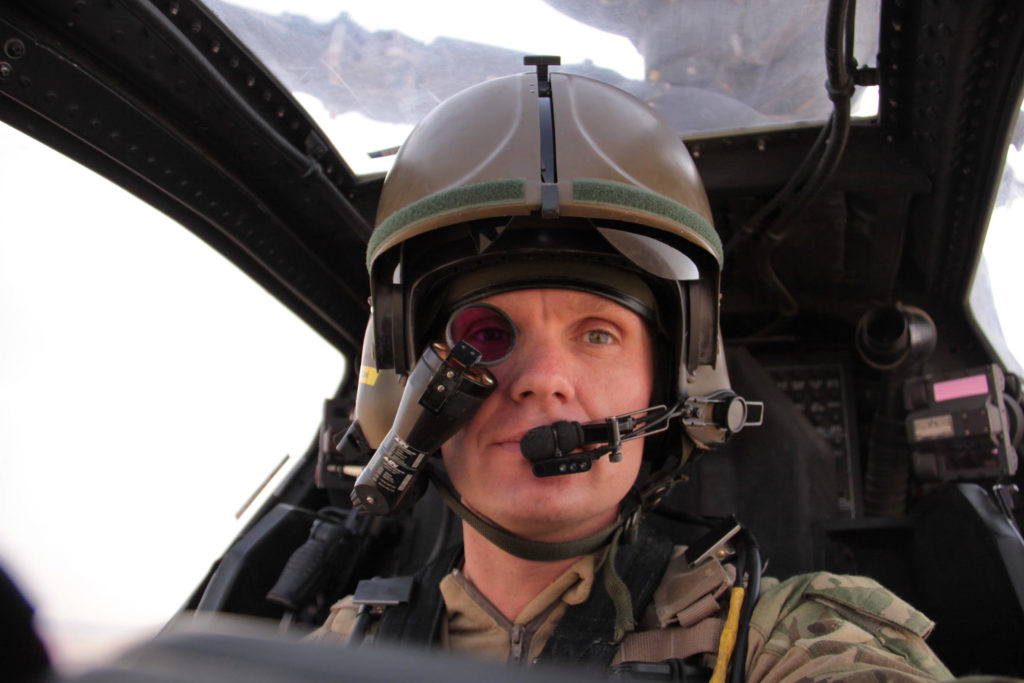 Clive in the cockpit. In this photo you can see the bulky visor housing on the front of the helmet. Crews would remove this so that they could attach the ‘modified’ NVG mount with single tube.
Clive in the cockpit. In this photo you can see the bulky visor housing on the front of the helmet. Crews would remove this so that they could attach the ‘modified’ NVG mount with single tube.
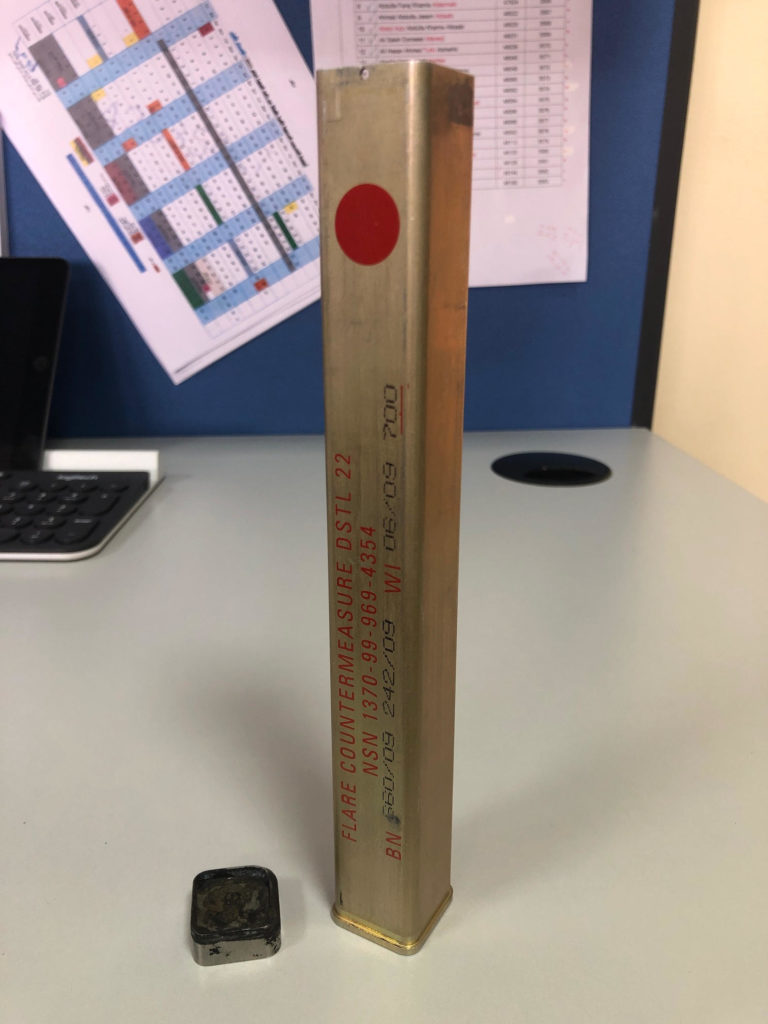 Clive’s desk at work. Left is the remains of the flare weight found in the nav bag. Right is a flare housing that would have been loaded into an Apache before missions.
Clive’s desk at work. Left is the remains of the flare weight found in the nav bag. Right is a flare housing that would have been loaded into an Apache before missions.
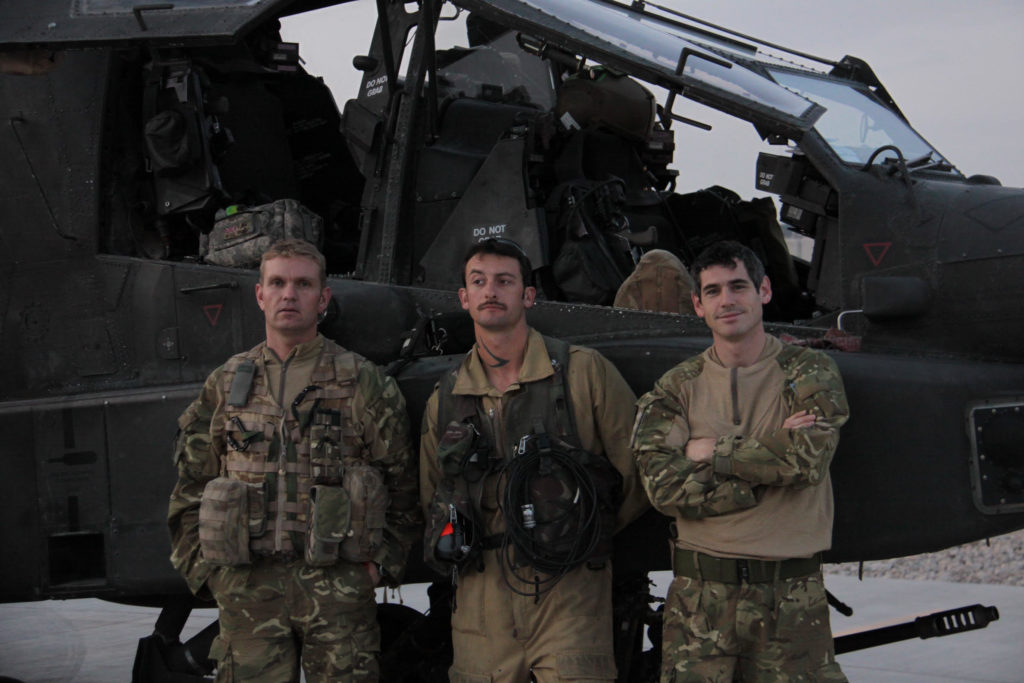 (Left) Clive Richardson (Middle) One of the ground support crew (Right) Phil – front seat pilot/gunner
(Left) Clive Richardson (Middle) One of the ground support crew (Right) Phil – front seat pilot/gunner
What was your biggest takeaway from this episode? Help yourself remember and share it with others by making a comment about it here below.
The post RWS 108 – Sharing an Apache Cockpit with a Burning Flare with Clive Richardson appeared first on The Rotary Wing Show Podcast.
14 November 2021, 8:53 pm - 39 minutes 39 secondsRWS 107 – ATSB Request for Information with Robert Chopin
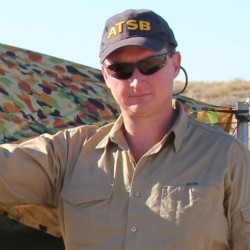 Outside of the ATSB, Rob is a Technical Councillor and Safety Officer for the Sport Aircraft Association of Australia (SAAA), is currently building an experimental kitplane (‘Van’s RV8’), and is the Deputy Wing Aviation Safety Officer with the Australian Air Force Cadets.
Outside of the ATSB, Rob is a Technical Councillor and Safety Officer for the Sport Aircraft Association of Australia (SAAA), is currently building an experimental kitplane (‘Van’s RV8’), and is the Deputy Wing Aviation Safety Officer with the Australian Air Force Cadets.
Halfway through 2021, the Australian Transport Safety Bureau (ATSB) put out a call for assistance for information from the aviation community.
What they are looking for is feedback or more information about any ground handling incidents on Robinson type helicopters, especially focused on the aft tail cone bulkhead or tail rotor gearbox areas
If you think back to whenever you have taken someone for their first helicopter ride, especially in smaller machines – there is an amount of trepidation in their eyes – “are you sure this thing is safe?” has to be going through their mind even if they aren’t one of the ones to ask that out loud.
And when you look at a helicopter as a collection of parts, it still amazes me that it all works together correctly even today.
A part of the reason that helicopters are so safe and that anyone would actually insure them is because of the rigur that has gone into investigating previous accidents and incidents. Organisations such as the ATSB, NTSB, AAIB and others have built up decades of experience retracing the events that lead up to an accident.
Over time those lessons have been incorporated back into designs and regulations. Rob Chopin has been fixing helicopters since 1988 and for the last 14 years has worked at the Australian Transport Safety Bureau.
In today’s episode Rob gives some background into the ATSB’s current request for information about helicopter ground handling damage and then we chat a bit about the accident investigation process that results in a report and how that comes together.
 Source: ATSB, R44 accident Broome Airport, Western Australia
Source: ATSB, R44 accident Broome Airport, Western Australia
Podcast: Subscribe in iTunes | Play in new window | Download
Links from this week’s episode:
Support the podcast on Patreon
ATSB seeks information from Robinson Helicopter owners and operators on ground handling incidents – Original request for information from the helicopter industryWhat was your biggest takeaway from this episode? Help yourself remember and share it with others by making a comment about it here below.
The post RWS 107 – ATSB Request for Information with Robert Chopin appeared first on The Rotary Wing Show Podcast.
6 October 2021, 9:26 am - 54 minutes 13 secondsRWS 106 – Mustering with Sam Chisholm
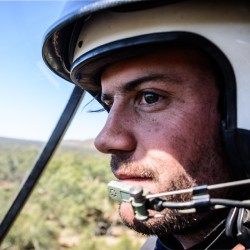 Sam Chisholm grew up on cattle properties and got into helicopter flying early. He has spent the last 16 years flying and mustering in rural Australia.
Sam Chisholm grew up on cattle properties and got into helicopter flying early. He has spent the last 16 years flying and mustering in rural Australia.
Cattle are big business in Australia. Rough round numbers has us at 25 million head of cattle and the industry employs somewhere around 200,000 people. Australia is the 3rd largest beef exporter in the world.
The cattle industry also contributes a sizable chunk of the annual helicopter hours flown in Australia.
One set of figures I had from 2004 was that 62% of all Robinson R22 flight hours in Australia were conducted in aerial mustering. I’d have to assume that holds true today if not a higher number.
I know helicopters are used for mustering a little bit in the US in Texas, a little bit in new zealand and I have to assume in Brazil also but when I look online – and this partly could be a factor of Google’s filtering because I’m here in Australia – but helicopter mustering is well and truly over represented in search results as a chiefly australian type of flying.
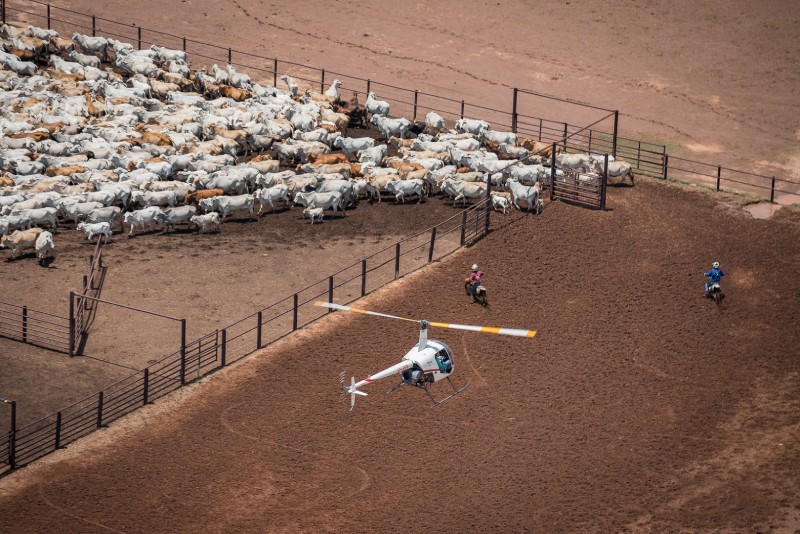 All photos – supplied Sam Chisholm
All photos – supplied Sam Chisholm
Mustering hasn’t always had the best reputation – it has sometimes been characterised as being a bit loose.
A lot of it happens hundreds of km’s away from any regulatory oversight and you could argue that because they are rarely carrying any passengers that CASA and other regulators aren’t particularly interested. The flip side of that is that CASA has on occasion come out with regulation changes without much consultation with the mustering part of the aviation community.
Mustering has also had its share of casualties and incidents. These can happen a long way from any emergency services. I’ve seen a documentary on one particular accident where the rescue AW139 had to stop and refuel enroute just to get on scene.
CASA’s 2015 sector risk profile of the industry summarised the danger. ‘Mustering, by definition involves low-level flying and is a hazard rich activity with the inherent danger of being only a few seconds away from impact in the case of an emergency or pilot distraction.’
Having said all that I have no personal experience with mustering at all, everything has been second hand. A big thanks to David Logan who is a listener and Patreon supporter that has just starting out on his helicopter licence and is tackling the theory exams. Dave put me in contact with today’s guest and its well overdue for us to jump in and learn more about mustering.
Sam Chisholm grew up on cattle properties and got into helicopter flying early. He has spent the last 16 years flying and mustering in rural Australia getting to see a good cross section of not only the industry but also the country. Sam paints a picture of a sector that has been maturing for a while now and that is using the helicopter as an incredibly important tool for station owners and beef production.
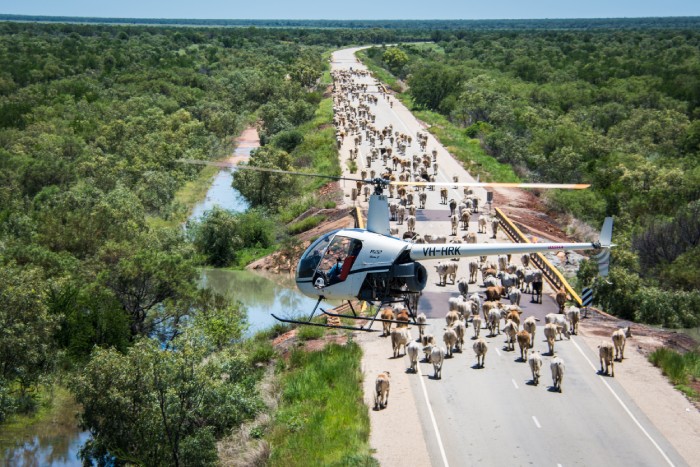
Podcast: Subscribe in iTunes | Play in new window | Download
Links from this week’s episode:
Support the podcast on Patreon
Flight Safety Australia Article – Crash of cultures – the challenge for aerial musteringVictoria River Downs Station – wikipedia article on one of Australia’s most famous cattle properties.
Webinar – A day in the life of a mustering pilot (2014) – a webinar on Youtube that I recorded with David Creed about his mustering career.
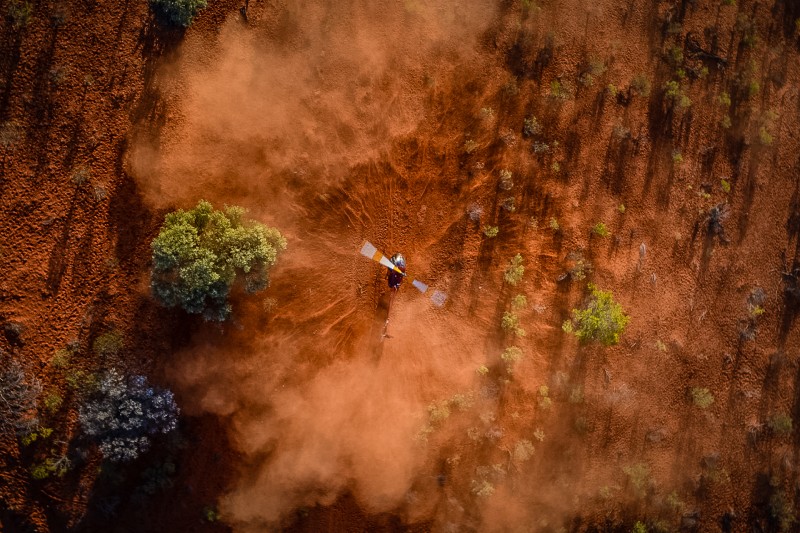
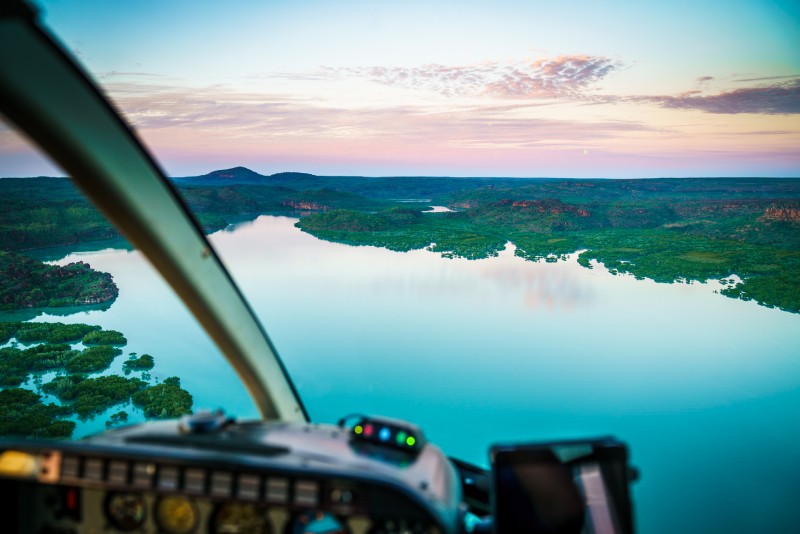
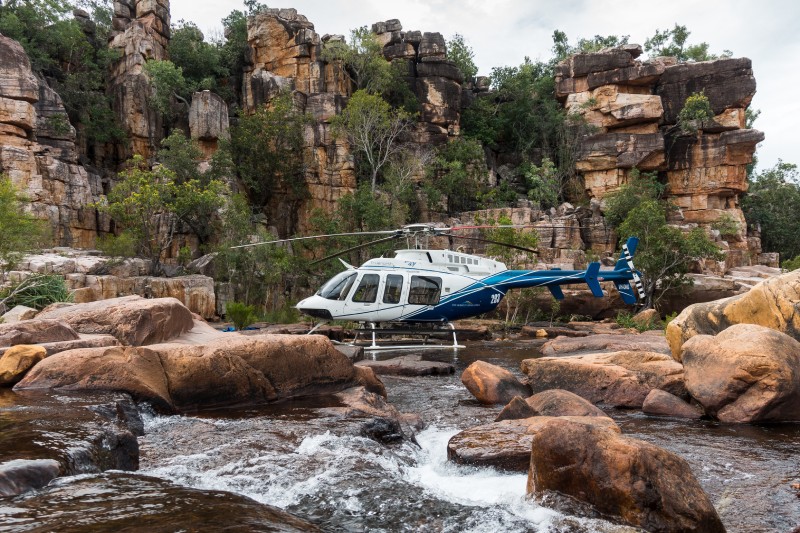 There is a lot of freedom positioning between tasks. Its not uncommon to stop for a swim or a bit of fishing.
There is a lot of freedom positioning between tasks. Its not uncommon to stop for a swim or a bit of fishing.
What was your biggest takeaway from this episode? Help yourself remember and share it with others by making a comment about it here below.
The post RWS 106 – Mustering with Sam Chisholm appeared first on The Rotary Wing Show Podcast.
31 August 2021, 8:58 am - 58 minutes 27 secondsRWS 105 – Enroute Decision Point with Miles Dunagan
 Miles Dunagan is the President of the National EMS Pilots Association (USA) with a goal of promoting safety in the industry.
Miles Dunagan is the President of the National EMS Pilots Association (USA) with a goal of promoting safety in the industry.
Chatter in the cabin starts to die down, you have reduced power and started to bleed back the airspeed. Outside your world is starting to shrink as the conditions start to deteriorate. You lean forward in your seat to try and see a little further ahead. The VSI is showing a descent as you keep visual contact with the ground. What do you do next?
Enroute Decision Point is a tool that you can use to shift your mindset into a deliberate decision making mode when you find yourself in deteriorating conditions. It aims to avoid the situation where the helicopter gradually gets into a worse and worse situation before a decision is forced upon us and risk has greatly increased.
Miles Dunagan is the President of the National EMS Pilots Association (NEMSPA) in the US. In this episode Miles talks about the history of the organisation and the origins of Enroute Decision Point as a safety tool.
Different from Point-of-no-return (PNR) or Equal Time point (EPT) which are calculated using a formula to define a point on the route leg – Enroute Decision Point is more a trigger to make a flight decision that could occur anywhere on the flight.
“Down by 30” – the first aspect relates to airspeed. If you have slowed down by 30kts or more from your cruise speed due to conditions.
Minimum enroute height – If you have already descended to the minimum enroute height for that leg. (May depend on the area you fly)
If either of these occur then it triggers an Enroute Decision Point. You can turn around to better conditions, land or transition to IFR recovery at a suitable airfield.

Podcast: Subscribe in iTunes | Play in new window | Download
Links from this week’s episode:
Support the podcast on Patreon
National EMS Pilots Association – striving to help the Air Medical Transport industry prosper safely and enhance the delivery of pre-hospital health careOutback Mike (Facebook page) – Past guest Mike Atkinson is on a solo survival expedition through the Great Barrier Reef dugout canoe.
What was your biggest takeaway from this episode? Help yourself remember and share it with others by making a comment about it here below.
The post RWS 105 – Enroute Decision Point with Miles Dunagan appeared first on The Rotary Wing Show Podcast.
10 August 2021, 10:31 pm - 1 hour 22 minutesRWS 104 – Virtual Reality Simulators 2021 Revisit with Chris Ryan
 Chris Ryan is the owner of Ryan Aerospace – a company building virtual reality flight simulators that are changing the way pilots train.
Chris Ryan is the owner of Ryan Aerospace – a company building virtual reality flight simulators that are changing the way pilots train.
How would you like to have been holding a steady hover and taking off and landing at 3 hours of helicopter flight time? Chris Ryan couldn’t afford helicopter lessons so he built himself a simulator to practice at home. His instructor was so impressed at his progress that he encouraged Chris to turn the simulator into a business.
From a humble PVC pipe contraption to now selling hundreds of virtual reality helicopter flight simulators into the military market, Chris Ryan (Ryan Aerospace) has taken a long road to get to where he is today.
Back in 2017, in episode 61, I spoke with Sérgio Costa from helisimmer.com where we covered a lot of information about virtual reality (VR) and how it applies to flight simulators.
There are almost 9000 members of Sérgio’s facebook group now and it is a very active place for people interested in helicopter simulators. To the point where he’s been able to influence the development of big name consumer sims to make them more helicopter friendly.
In this episode we revisit VR sims and see where they are up to. This gear has the potential to reduce in-aircraft training time by up to 40% – which given the cost of helicopters, is going to grab anyone’s attention.
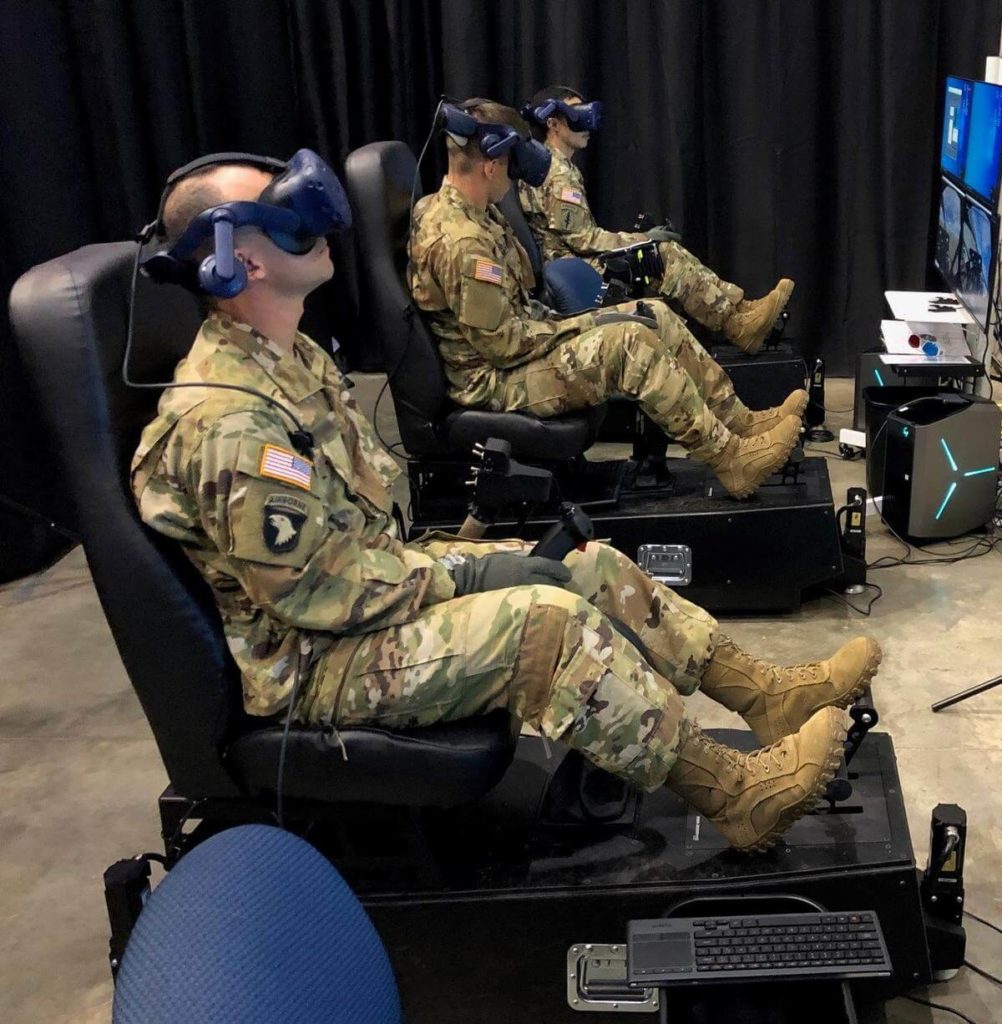 US Army pilots training in virtual reality on the HELIMOD Mark III Helicopter simulators
US Army pilots training in virtual reality on the HELIMOD Mark III Helicopter simulators
Chris talks about what it takes to turn an idea into reality and some of the journey that this technology has taken to get to point where it is standard for pilots training at Fort Rucker.
Along with the simulators the goal is to develop a learning management system which will allow a student to move through sequences with a simulated instructor and features such as being able to see and follow the path for a demonstrated circuit.
We also cover:
- sim sickness and how it affects some people
- new technology that is coming out in mixed reality and hand tracking, and
- what gear you should be looking for if you want to make your own home VR setup for training
Podcast: Subscribe in iTunes | Play in new window | Download
Links from this week’s episode:
Support the podcast on Patreon
Ryan Aerospace – This is Chris’s company based on the Gold Coast, Australia and building simulators for customers around the world including the US Army and US Air Force.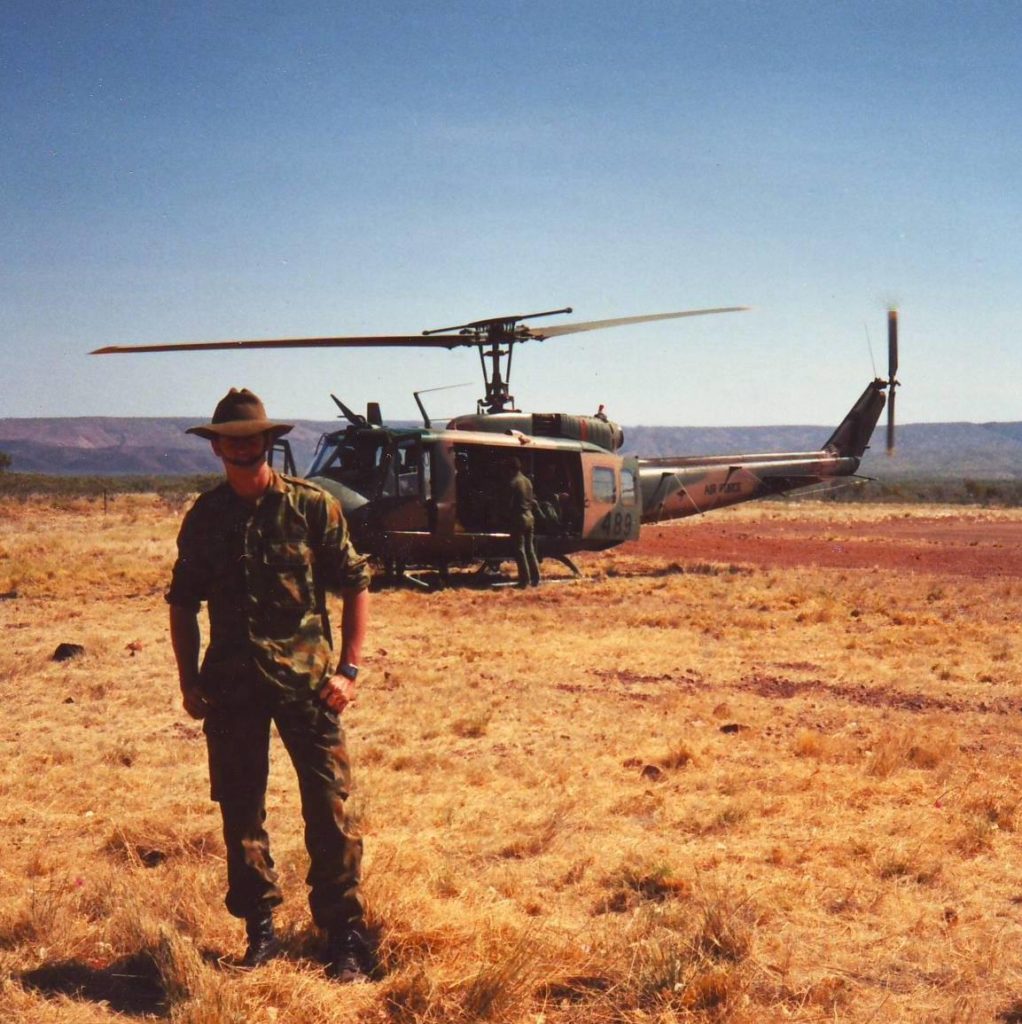 Chris had his first helicopter ride while in the Australian Army Reserves. His Dad owned planes growing up so Chris was on the controls from an early age.
Chris had his first helicopter ride while in the Australian Army Reserves. His Dad owned planes growing up so Chris was on the controls from an early age.
What was your biggest takeaway from this episode? Help yourself remember and share it with others by making a comment about it here below.
The post RWS 104 – Virtual Reality Simulators 2021 Revisit with Chris Ryan appeared first on The Rotary Wing Show Podcast.
3 August 2021, 10:05 pm - 1 hour 12 minutesRWS 103 – Robinson Governor Operation with Richard Mornington-Sanford
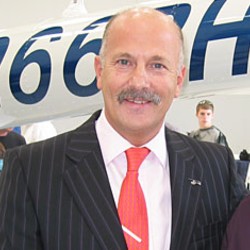 Richard Mornington-Sandford – flight instructor and engineering trainer has a long history working with the Robinson brand.
Richard Mornington-Sandford – flight instructor and engineering trainer has a long history working with the Robinson brand.
Before this episode if you told me that there was more than an hour conversation that you could get out of talking about the governor in Robinson type helicopters I would have been dubious. I was wrong!
Today we have back on the show pilot and engineer Richard Mornington-Sanford.
Richard Mornington-Sanford was an engineer in the RAF before branching out into the roles of a civilian flight instructor, licensed helicopter engineer and air accident investigator. A photo on his website has an endorsement from Frank Robinson in 1998 with at that point, 18 years of association with the Robinson Helicopter Company and its products. Richard is still conducting Robinson Pilot Flight Safety Courses around the world today. You can do the maths on the years of experience there.
Richard was last on in episode 93 where he provides probably the best coverage of carburetor icing for helicopters that I’ve ever come across. There was a lot of good feedback in emails from that episode and I’m sure this one will be similar.
We do chiefly talk about the Robinsons – R22 and R44 but there is plenty of generic governor operation content here that you can adapt to other types. If you are solely a turbine driver then I think this is good background info too and hopefully entertaining.
Richard is living in rural Malaysia so the call connection was a little spotty in places but hopefully I’ve tidied it up ok.
In this podcast we cover:
- Robinson R22 and R44 engine correlator
- Where the governor gets its signal inputs from
- Operation of the governor and its inputs at different RPM ranges
- Inter-action between turbulent conditions, the governor and carb icing
- Governor-off training for pilots
- Failure modes
Podcast: Subscribe in iTunes | Play in new window | Download
Links from this week’s episode:
Support the podcast on Patreon
Mornington Sanford Aviation – Richard runs a number of safety and engineering courses. You can find out more on his website and there is a good collection there of blog posts that are well worth reading.What was your biggest takeaway from this episode? Help yourself remember and share it with others by making a comment about it here below.
The post RWS 103 – Robinson Governor Operation with Richard Mornington-Sanford appeared first on The Rotary Wing Show Podcast.
1 July 2021, 2:33 am - 45 minutes 7 secondsRWS 102 – Helicopter Lessons in 10 Minutes or Less with Jacob
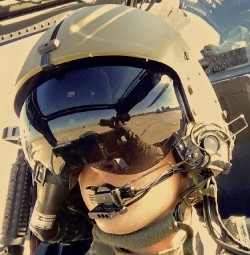 Jacob has a busy schedule as an Apache instructor and standards officer but has been chipping away at videos on YouTube for some time.
Jacob has a busy schedule as an Apache instructor and standards officer but has been chipping away at videos on YouTube for some time.
If the images and text on the page of your aerodynamic textbook are starting to blur together then it might be time to take a break and try to ingest the information using another format. Jacob from the YouTube channel Helicopter Lessons in 10 Minutes or Less is an Apache instructor and standards officer who has a great ability to simplify and layout out aerodynamic topics in his videos.
I conducted a number of job interviews for pilots positions when I was heading up the flying school at my past job. To try and keep everything fair and repeatable I had the same list of questions to take all the applicants through.
There was the normal behavioural style interview questions you would expect for any job. And then there were the aviation professional knowledge questions depending on the role we were hiring for.
It surprised me but those professional knowledge questions really split the field and made applicants stand out either for good or bad. People are getting through flight school or have been out on the job flying for a little and are just paying off and ignoring the study that got them the licence in the first place.
The first question that would trip up people would be on VFR alternate weather requirements. Some people would mix up the numbers from VMC criteria with those of alternate minimums. And then there was some confusion at times between minimas when you are able to use Helicopter VMC at the destination and times when you couldn’t for – example in controlled airspace.
And I get it – I know interviews are pretty stressful and artificial. Normally if you weren’t sure of the answer or the number during pre-flight planning you could look it up if you had to.
But that is a pretty fair question for a job interview and you want to be able to nail it and similar air law questions because its going to elevate you above the pack if others aren’t putting in the time to study and keep on top of the regs.
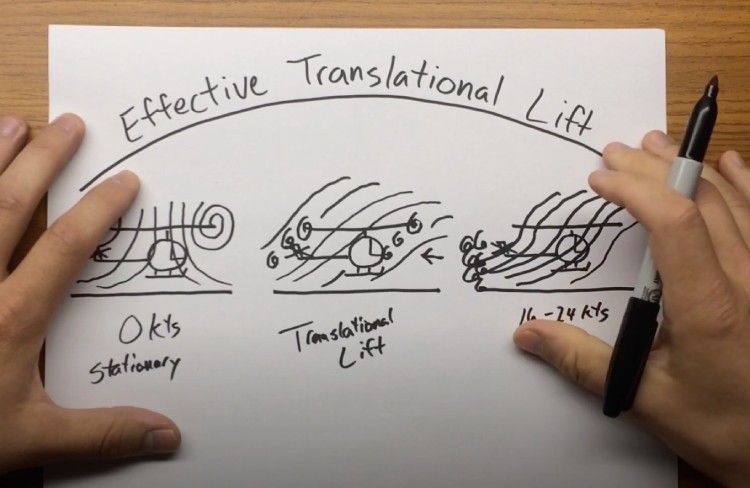
The other one that surprised me was the ability or lack of it for pilot job applicants to be able to draw and label a basic rotor vector diagram on a blank sheet of paper or a whiteboard. For some pilots that looked like something that they just hadn’t done or looked at in a while and they couldn’t do it or could only get parts of it out.
Again I think being able to draw a vector diagram is a pretty low bar for commercial pilots to be able to spit out without too much thought in a job interview scenario. But again asking people to do that really helped to split the pack.
And its tough as an interviewer – you’ve got make a decision in less than 60mins sometime with someone whether they can do the job and where they sit against other applicants. It can come down to few questions like those.
Let’s do a little bit of introspection here – if you are listening to this and the thought of walking up to a blank white board and drawing a basic vector diagram then using that to explain dissymmetry of lift, ground effect and autorotation – if that makes you sweat and feel a bit uncomfortable – Then thats great! We found an easy spot where you can put a bit of effort in and get yourself back up to a professional standard.
It shouldn’t matter if you are a commercial pilot or a private pilot – that professional standard and pride is something that we should hold ourselves to and each other too. We owe it to our families and to the people that trust us to fly them around.
And if you have to do it in your next job interview and you pull it off flawlessly and confidently – send me the cheque in the mail!
To turn you into an aerodynamics guru in the shortest amount of time, probably the best resource I can point you to is the youtube channel Helicopter Lessons in 10 Minutes or less.
 Some of the videos from Jacob’s channel. If there is a topic you want covered then let him know.
Some of the videos from Jacob’s channel. If there is a topic you want covered then let him know.
To chat about the history of the channel and what goes into making the videos we’ve got the creator Jacob joining us today. Jacob is an Apache instructor and standards officer.
After a bit of a hiatus out doing what apache pilots do – Jacob is back online and has started releasing some new videos and has several more topics in the queue.
Podcast: Subscribe in iTunes | Play in new window | Download
Links from this week’s episode:
Support the podcast on Patreon
Jacob’s YouTube Channel – Helicopter Lessons in 10 Minutes or LessBe part of the conversation! What was your biggest takeaway from this episode?
The post RWS 102 – Helicopter Lessons in 10 Minutes or Less with Jacob appeared first on The Rotary Wing Show Podcast.
21 June 2021, 9:39 am - More Episodes? Get the App
Your feedback is valuable to us. Should you encounter any bugs, glitches, lack of functionality or other problems, please email us on [email protected] or join Moon.FM Telegram Group where you can talk directly to the dev team who are happy to answer any queries.

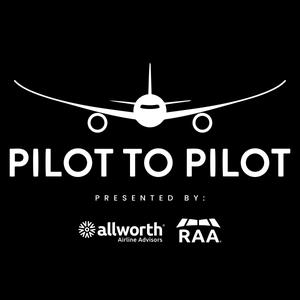 Pilot to Pilot - Aviation Podcast
Pilot to Pilot - Aviation Podcast
 Aviation News Talk podcast
Aviation News Talk podcast
 Fighter Pilot Podcast
Fighter Pilot Podcast
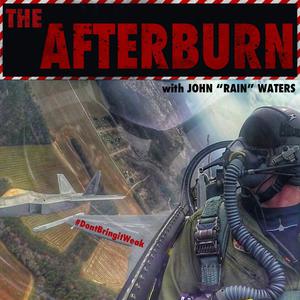 The Afterburn Podcast
The Afterburn Podcast
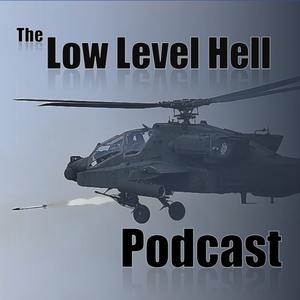 The Low Level Hell Podcast
The Low Level Hell Podcast